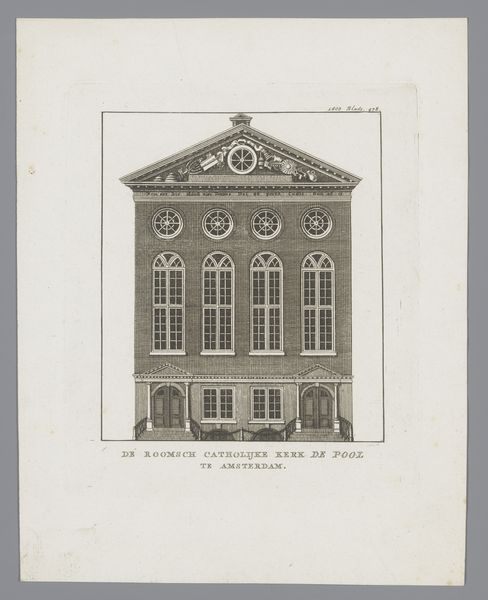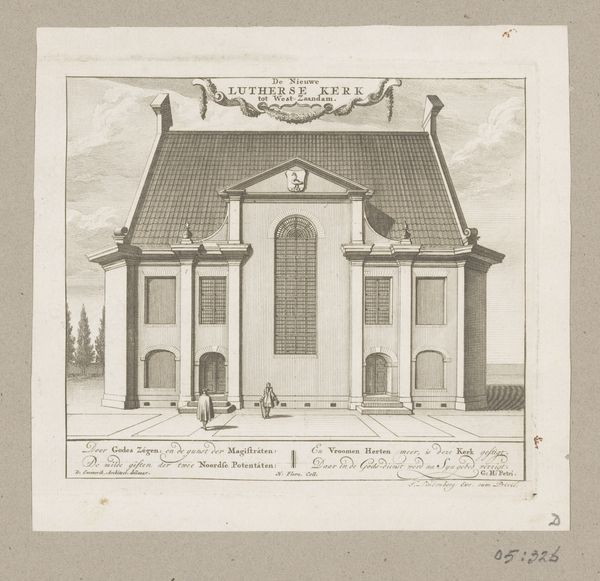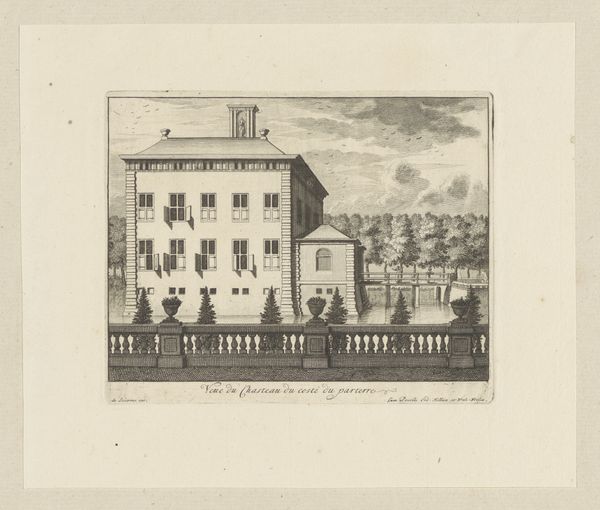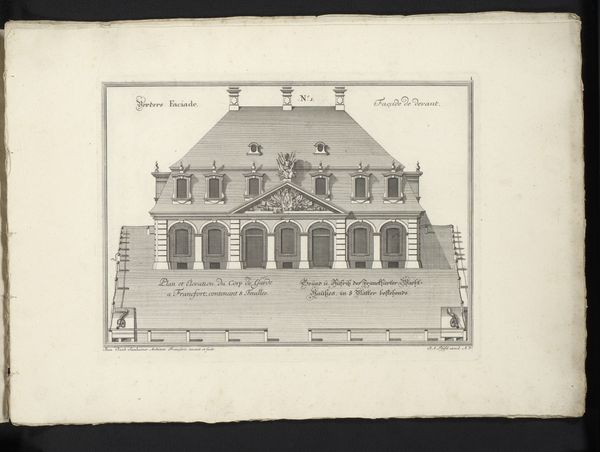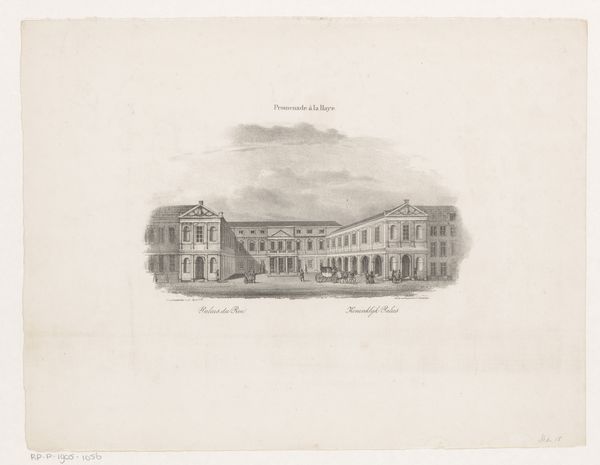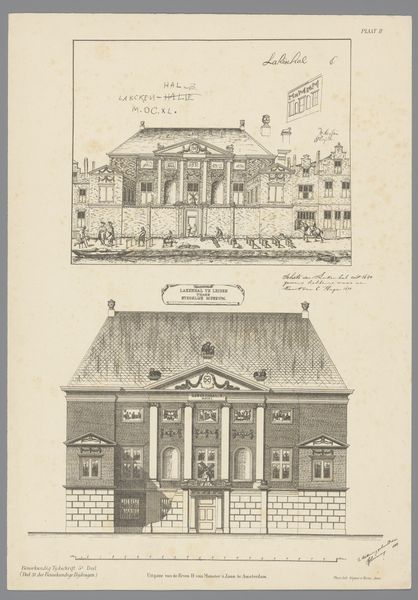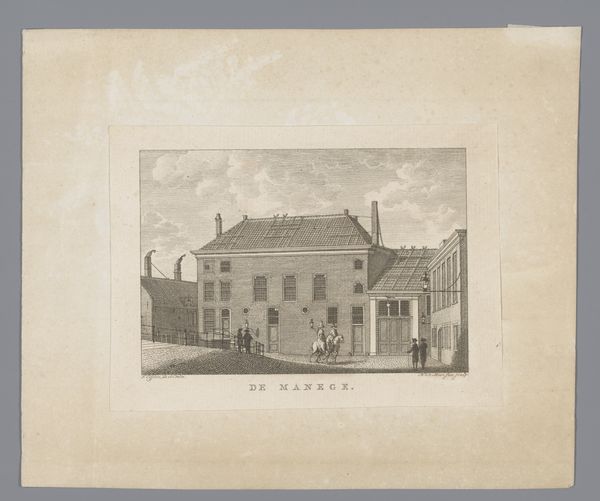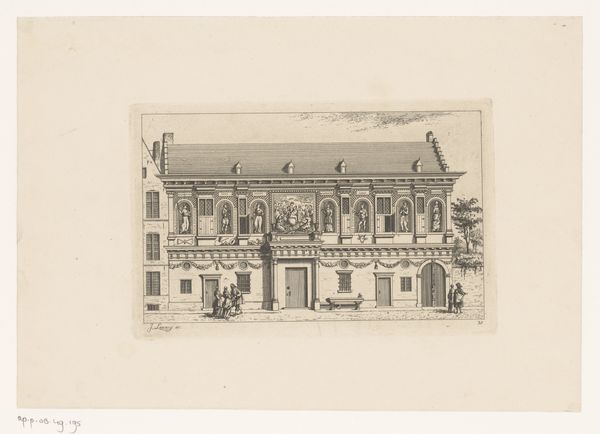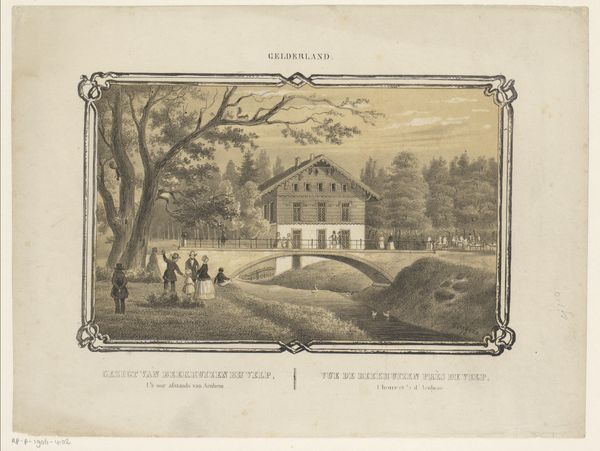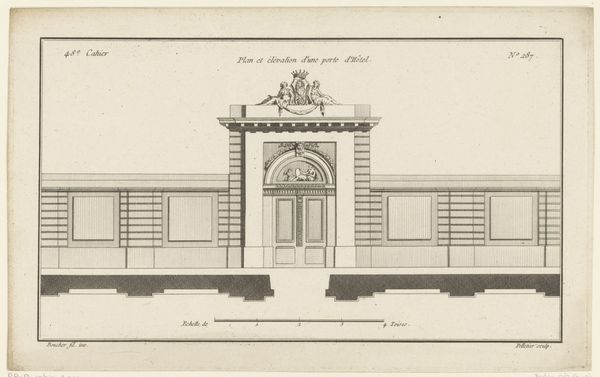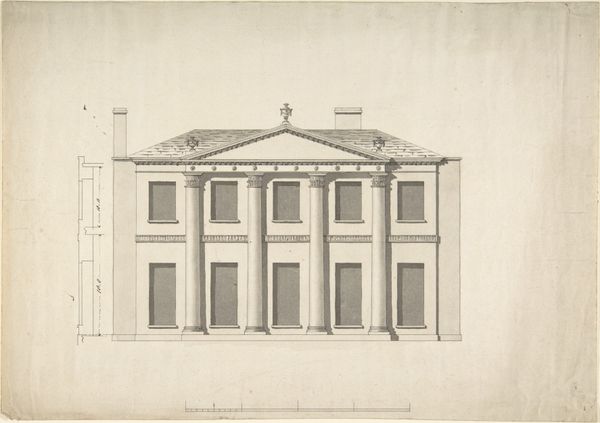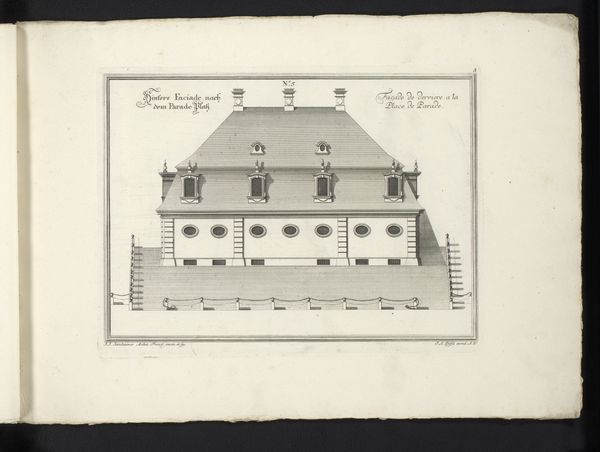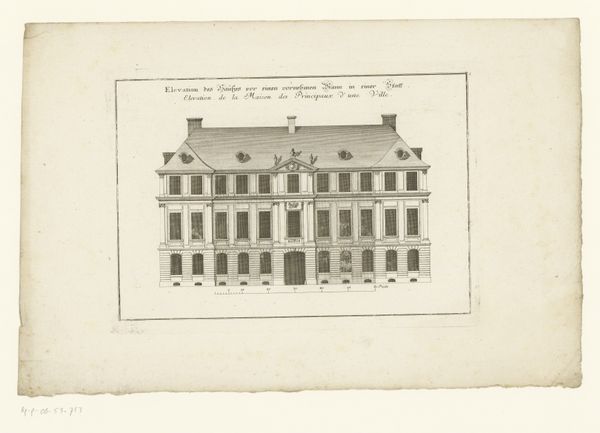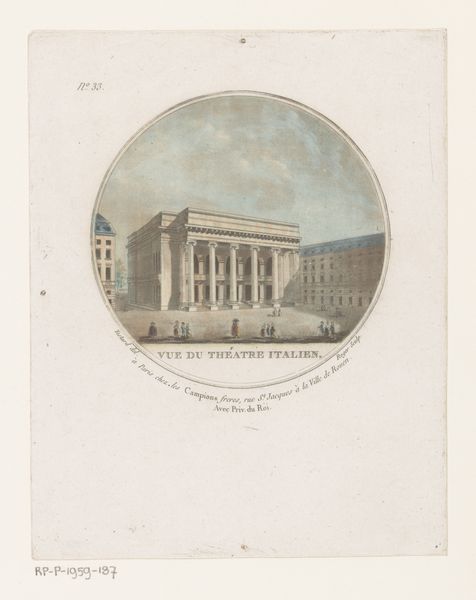
drawing, paper, ink, engraving, architecture
#
drawing
#
neoclacissism
#
etching
#
paper
#
ink
#
geometric
#
cityscape
#
engraving
#
architecture
Dimensions: height 255 mm, width 335 mm
Copyright: Rijks Museum: Open Domain
Curator: This delicate work, created between 1840 and 1876 by Johannes Hermanus van de Weijer, is entitled "Schoolgebouw te Grootegast," which translates to "School Building in Grootegast." It's rendered with ink on paper using etching and engraving techniques. Editor: It's immediately striking how much stillness is captured. The symmetry and precise lines evoke a sense of order and calm. Almost like an architectural blueprint but with an artistic sensibility. Curator: Indeed. It presents a Neoclassical style in its architectural depiction. However, viewed through a lens informed by social context, it raises interesting questions about the purpose of the architecture: who has access to it? This type of formal education in this region during this period might be a direct indicator of social hierarchies. Editor: The geometric rigidity, the way the light falls uniformly on the facade, all these technical qualities are undeniable, though. The craftsmanship involved in creating those finely etched details adds so much. There is an objective beauty in how it captures an ideal architectural form. Curator: But that idealized form serves a particular function. Think about the potential power dynamics represented in something like that period classroom, if this is designed with a social and moral objective to promote cultural ideas within the community through institutional setting. I see an expression of power relations inherent in architecture itself. Editor: I see the beauty of the pure lines. To me, this drawing uses structure as an essential aesthetic quality and reveals, perhaps unintentionally, a different facet of beauty. Curator: I concede that one can get lost in the precise technique, though acknowledging those social connotations gives me more food for thought when viewing. Editor: And acknowledging those connotations makes me see, past the structure and form, how those simple choices serve deeper meanings than I might have imagined.
Comments
No comments
Be the first to comment and join the conversation on the ultimate creative platform.
